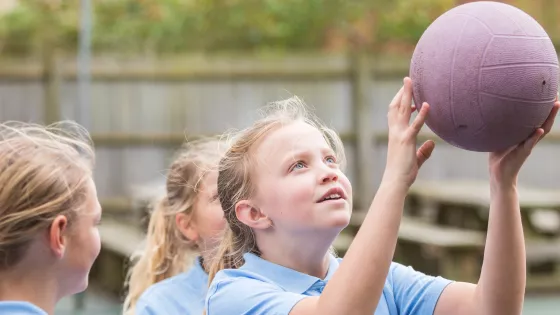Schools should have a written policy on supporting pupils with medical conditions. This page sets out what the policy should cover and includes a link to a template you can download for free.
Putting a written policy in place
- All schools should have a written policy on supporting pupils with medical conditions.
- It’s best practice to publish your medical conditions policy on the school’s website.
The policy explains the arrangements you have in place to make sure young people with medical conditions are safe and included in all areas of school life, including sports, break times, day visits and residential visits. Schools should communicate with families and healthcare professionals to put the right support in place.
Schools should take into account how a young person’s condition might affect their learning. For example, research shows that a significantly high proportion of young people with epilepsy have difficulty in at least one area of cognition or behaviour.
Click here to find out more about this in Young Epilepsy’s CHESS (Children with Epilepsy in Sussex Schools) report.
If your school has specific policies relating to young people with epilepsy, you may find it helpful to include these as appendices to the main policy.
You may also find it useful to include in the policy a link to this guide: www.youngepilepsy.org.uk/guideforschools
The Health Conditions in Schools Alliance has produced a template medical policy that you can download for free.
Safeguarding
Support for pupils with medical conditions forms part of schools' safeguarding responsibilities. For example, in England the Government definition of safeguarding includes preventing impairment of children's health.
Equality
Young people with epilepsy are protected from disability discrimination. Schools are required to take reasonable steps (known as 'reasonable adjustments') to ensure that a young person with epilepsy is not at a substantial disadvantage compared to their peers.
Inclusion
Some young people with epilepsy are unable to take part in certain activities due to specific medical advice. However, in most circumstances young people with epilepsy can be included with the right support in place. A risk assessment, informed by the young person's Individual Healthcare Plan (IHP), can help put the activity in context.
Misconceptions about epilepsy can be a significant barrier to inclusion in education. Young people with epilepsy may be excluded from activities due to misguided concerns about safety. These concerns may come from school staff, parents, and sometimes from the young person themselves.
Exclusion from education in any form can have long-term detrimental effects that may limit the opportunities these young people have in the future.
Simple adjustments to the environment, routine and equipment may help a young person with epilepsy.
These could include:
- Clear, safe (risk assessed) environment
- Avoiding triggers e.g. heat, dehydration, lights, noise levels, stress
- Visual supports to aid learning and memory
- Calm / time-out / rest area
Some young people with epilepsy need to sleep during the day if they have had a seizure. They may need time to 'recharge' before they are able to rejoin lessons. Access to rest space at school can help avoid young people being sent home unnecessarily.
Young people with epilepsy may need to adapt their daily routine to accommodate their condition, including food, drink, medication and sleep. Reasonable adjustments must be made to accommodate these needs, e.g. by allowing them to eat or drink at a particular time, or issuing them with a 'take a break' card.
Many activities, including swimming, climbing and 'extreme' sports can be managed by putting the appropriate levels of supervision in place and taking sensible precautions. A personal risk assessment should be discussed and agreed with the young person and parents. Schools should ensure that sufficient numbers of staff have training in seizure first aid and (where needed) administering emergency medication.


